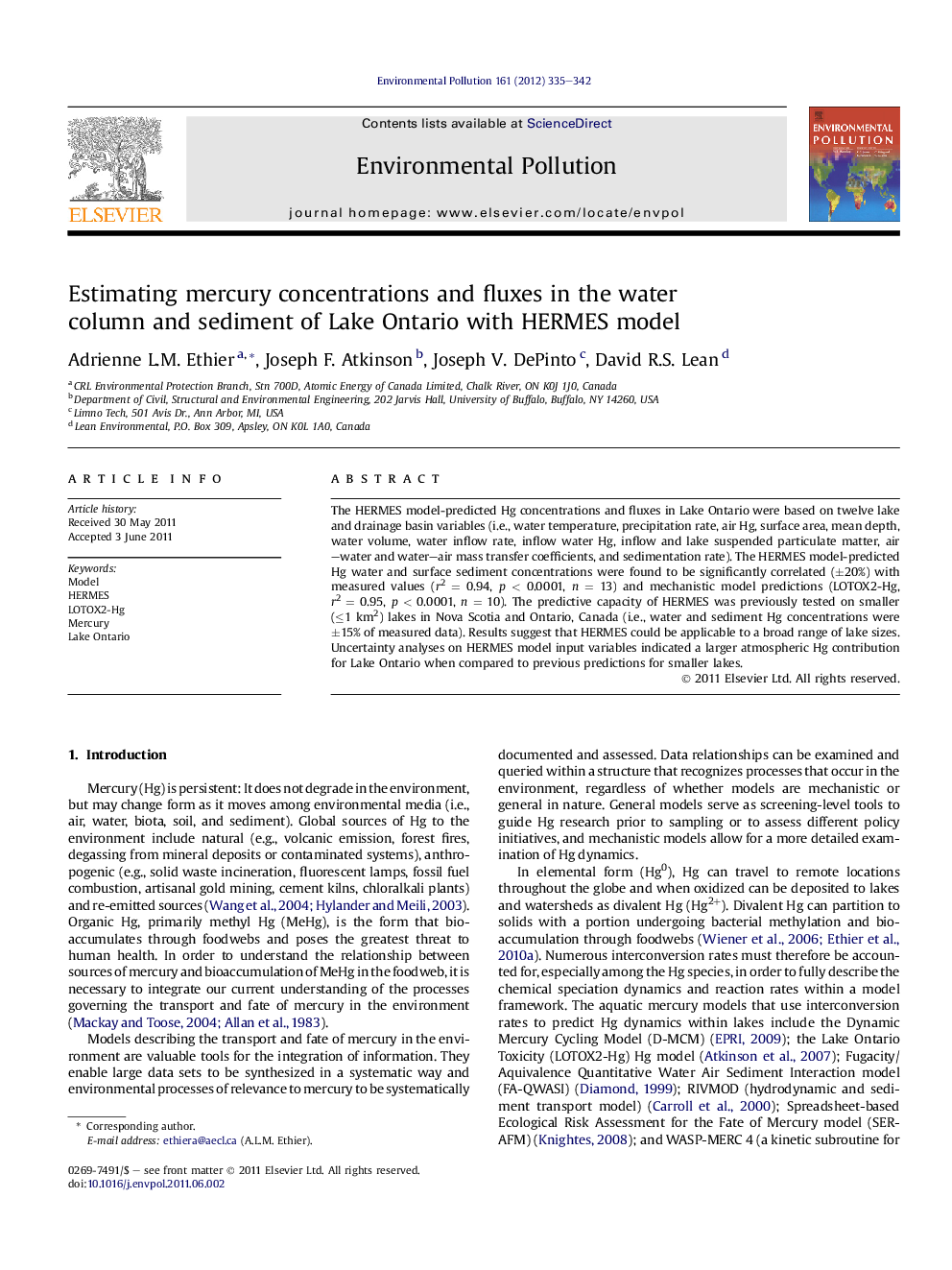| Article ID | Journal | Published Year | Pages | File Type |
|---|---|---|---|---|
| 4425137 | Environmental Pollution | 2012 | 8 Pages |
The HERMES model-predicted Hg concentrations and fluxes in Lake Ontario were based on twelve lake and drainage basin variables (i.e., water temperature, precipitation rate, air Hg, surface area, mean depth, water volume, water inflow rate, inflow water Hg, inflow and lake suspended particulate matter, air–water and water–air mass transfer coefficients, and sedimentation rate). The HERMES model-predicted Hg water and surface sediment concentrations were found to be significantly correlated (±20%) with measured values (r2 = 0.94, p < 0.0001, n = 13) and mechanistic model predictions (LOTOX2-Hg, r2 = 0.95, p < 0.0001, n = 10). The predictive capacity of HERMES was previously tested on smaller (≤1 km2) lakes in Nova Scotia and Ontario, Canada (i.e., water and sediment Hg concentrations were ±15% of measured data). Results suggest that HERMES could be applicable to a broad range of lake sizes. Uncertainty analyses on HERMES model input variables indicated a larger atmospheric Hg contribution for Lake Ontario when compared to previous predictions for smaller lakes.
► A screening-level Hg model (HERMES) was evaluated on a large urban lake. ► HERMES was significantly (p < 0.0001) correlated with measured values. ► HERMES was significantly (p < 0.0001) correlated with predicted LOTOX2-Hg values. ► HERMES shows larger atmospheric Hg input then previously studied smaller lakes.
